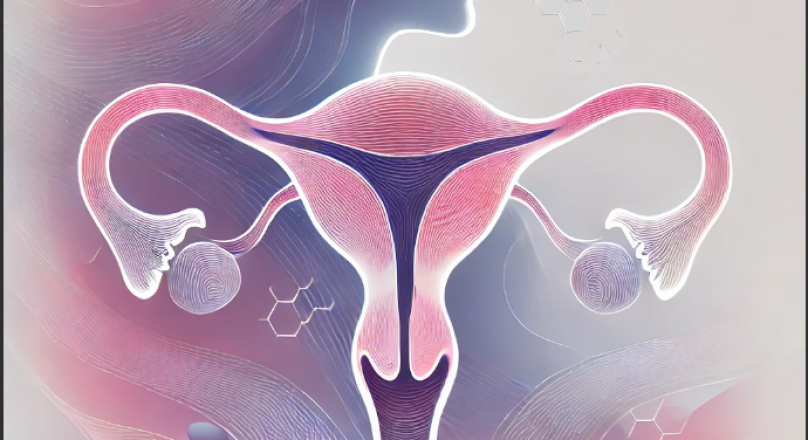Results for ""
From Image to Insight: How CNN Models are Transforming PCOS Diagnosis for Women’s Health
Polycystic Ovary Syndrome (PCOS) is a complex and multifaceted endocrine disorder affecting an estimated 5-10% of women globally. In India, PCOS prevalence rates are even higher, impacting approximately 9% to 22% of women of reproductive age. While the precise cause of PCOS remains unclear, research suggests it involves a combination of genetic, hormonal, metabolic, and environmental factors. PCOS often contributes to other health conditions, such as diabetes, cardiovascular disease, and infertility, or, in turn, may lead to these health conditions over time.
The prevalence of PCOS has been increasing in recent years, with lifestyle and environmental changes, such as high intake of processed foods, exposure to air and plastic pollution, and hormonal shifts from early puberty, contributing to this rise. Deteriorating environmental factors affect hormonal pathways by altering aromatase enzyme activities, which convert androgens into estrogens. Such disruptions can create hormonal imbalances, and early puberty is also a major reason why PCOS is rising explicitly among adolescent females. The age at which females are developing puberty and, subsequently, PCOS continues to decrease. PCOS is often difficult to diagnose due to numerous factors and diagnostic criteria. However, advancements in Artificial Intelligence (AI) and machine learning, especially through Convolutional Neural Networks (CNNs), are providing new, precise, and scalable solutions for PCOS detection and management.
CNN Models Transforming PCOS Detection
Convolutional Neural Networks (CNNs) are specialized AI models particularly well-suited for image classification—a process of categorizing images into specific groups based on visual features. CNNs can recognize complex patterns, shapes, and textures in images, allowing them to "learn" what a specific feature looks like, such as a cyst or a healthy ovarian structure. These models are composed of layers that automatically detect patterns and classify them, making CNNs ideal for medical imaging applications like PCOS detection. By analysing ultrasound images, CNNs help detect specific PCOS markers in ovarian structures that may otherwise be missed in manual examinations.
CystNet and PCONet are two CNN-based models developed to improve the detection of Polycystic Ovary Syndrome (PCOS) through ultrasound image analysis, yet they employ distinct approaches and demonstrate different performance levels. CystNet uses multilevel thresholding techniques for segmenting ultrasound images, focusing on identifying specific cystic patterns and follicle distributions associated with PCOS. By integrating clinical data with image segmentation, CystNet achieves an accuracy of approximately 84.81% for identifying polycystic ovarian morphology (PCOM). In contrast, PCONet is a more specialized CNN model that emphasizes detailed morphological analysis of ovarian features, such as cyst size, shape, and texture. This targeted approach allows PCONet to achieve a higher accuracy of 98.12% in PCOS detection, outperforming other models like InceptionV3, which achieved a 96.56% accuracy. While both models contribute valuable diagnostic insights, PCONet’s focus on in-depth morphological characteristics offers a more precise diagnostic capability than CystNet’s combined image and clinical data integration approach.
AI’s Role in Clinical Settings
The integration of AI in clinical settings, particularly through CNN models, is revolutionizing PCOS diagnostics. Tools like CystNet and PCONet allow clinicians to perform real-time, automated analyses of ovarian images, continuously monitoring and detecting PCOS markers that may be missed during manual examinations. When these AI tools are integrated with Electronic Health Records (EHR), they combine insights from patient history, lifestyle, and hormone levels, providing a comprehensive diagnostic view. This enhances clinicians’ ability to offer personalized, evidence-based recommendations and track patient progress over time. The data these models use is generalizable and easily accessible, including routine lab tests and ultrasound imaging, making it compatible with standard clinical workflows.
Limitations and Future Directions
While CNNs hold great promise for PCOS diagnostics, there are still limitations to overcome. Models like CystNet and PCONet are often trained on data from specific regions, which limits their generalizability across different populations. Limited data availability, particularly from underrepresented ethnic groups and populations with distinct genetic profiles, poses a challenge to the model’s effectiveness in diverse settings. Additionally, CNN models have high computational demands, which may be difficult to meet in resource-limited clinical environments.
To address these challenges, researchers are expanding datasets to include a broader range of populations, improving the models' robustness and adaptability. Clinical trials across multiple institutions are also planned to validate the effectiveness of AI-driven PCOS tools. In the future, integrating CNN models with wearable devices and remote monitoring solutions could enable real-time tracking of PCOS symptoms and hormone levels, allowing clinicians to make proactive adjustments in treatment plans.
Conclusion: Paving the Way for Improved Women’s Health
AI and CNN-based models like CystNet and PCONet represent a transformative step forward in the detection and management of PCOS. By providing accurate, image-based classification, these tools offer consistent insights that improve upon traditional diagnostic methods. As AI technology advances, it is set to become a critical part of women’s healthcare, enabling early diagnosis, continuous monitoring, and personalized treatment plans that address the complex nature of PCOS. These innovations promise not only to improve patient outcomes but also to empower healthcare providers in delivering more precise and effective care.
Sources of Article
CystNet: An AI driven model for PCOS detection using multilevel thresholding of ultrasound images, PCONet: A Convolutional Neural Network Architecture to Detect Polycystic Ovary Syndrome (PCOS) from Ovarian Ultrasound Images






